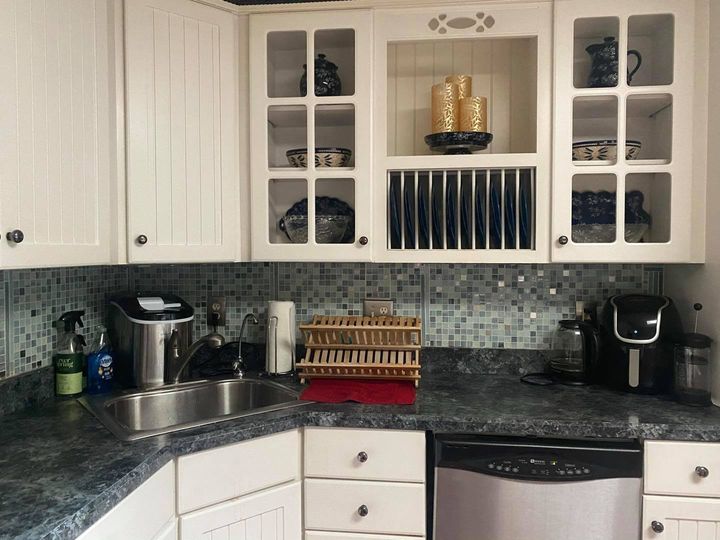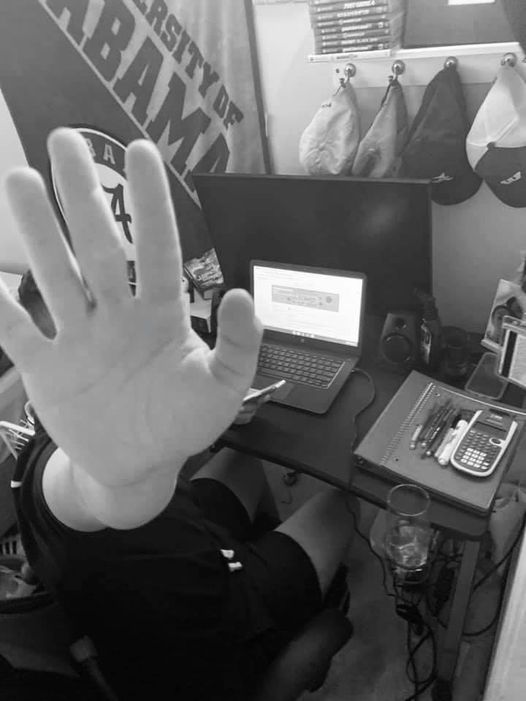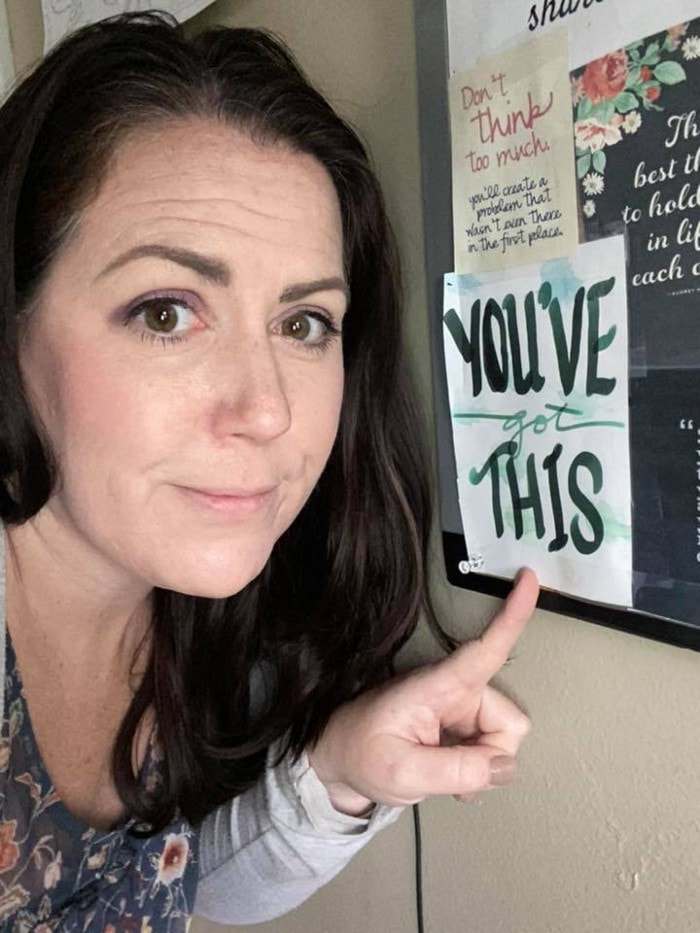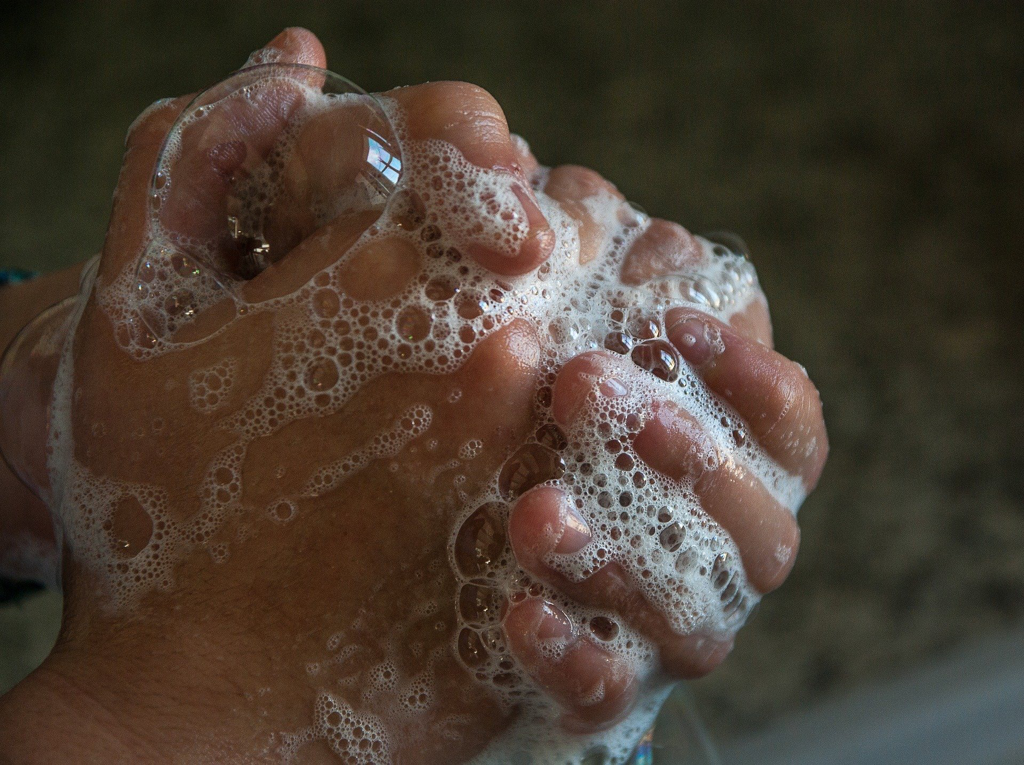|
New normal.
For some reason, I hate that term. Maybe it’s because I don’t like labeling something as normal vs. abnormal. It feels too judgmental. Maybe it’s because I don’t like change. Change is always hard and uncomfortable. But, this is my life now - the new normal. Whether I like it or not. After over a year of remote and hybrid learning where my children have been at home at least 3 school days each week, my children have returned to full time in person schooling. After over a year of working primarily from home, my husband has returned to being in the office for most of his shifts. The other day was our first day where I was the only one home. After over a year of me working fully remote from home, I'm still here - seeing all my patients via telehealth and teaching all my classes over Zoom. But, after 13 months of family togetherness, I was alone. The house was silent. No teacher’s voices could be heard on the computer through the doors of my children’s rooms. The house was silent. No cheesy manager jokes from my husband could be heard as he led a zoom meeting from our dining room table. The house was silent. No dog footsteps could be heard tip tapping on the hardwood floors as they wandered the house looking for anyone who was free and could give them some attention. They were snuggled all cozy in their crates, probably enjoying the quiet opportunities to nap. The house was silent. No dirty dishes were found in the sink as remnants of quick snack breaks between my kids’ classes or between my husband’s meetings. The house was silent. No one was there to pass me in the hallway. The house was silent. No one needed my help with getting into a Google Classroom meet. The house was silent. No one was there at my kitchen island eating their lunch while I poured myself another cup of tea. The house was silent. Silence recharges me. Silence refuels me. Silence calms me. But this silence was different. The house was silent and I realized just how lucky my family had been for the past year. We stayed healthy and we enjoyed the forced togetherness. The house was silent and I felt a deep gratitude for the memories we had made as a family over the past year. We adapted and grew and were able to be a part of each other’s lives in ways that never would have been possible without a pandemic. The house was silent. And I missed the loudness.
0 Comments
This morning I was struck with a deep sense of gratitude. As I meandered my way down the hallway in the early morning hours to wake my high schooler for the day, I smiled at the calmness that now fills my home.
In a normal year, our mornings would be a complete frenzy of activity. Total chaos would rule our day from the moment the 5:00AM alarm on my phone rang until we all finally crawled into our beds at the end of the day. It would be a race against the clock as we scurried around the house each morning trying to get everything done in time for us to leave for the day. Originally published on Grown and Flown. Click HERE to read full article. This is our official first day of high school picture and it sums up our feelings on the school year perfectly.
No. Nope. Not this. Stop. Get out. Go away. We want normal. Every parent, student, teacher, and administrator is having their patience, compassion, and ability to strike balance tested on a serious level these days. After just one day of a hybrid model of remote and in-person learning, I’m exhausted as a parent. I’ve spent all my hopefulness. I’ve used all my patience. I’ve done all I can do. Our family gave today our best. Tonight we regroup, refuel, reset our expectations, and hope that each day will get easier. A friend’s child asked her today “will it always be like this?” We all could benefit from asking ourselves that question every day. We need to remember that this time in our lives will pass. It is temporary. Brighter days are ahead. It will not always be like this. Here’s to finding the bright spots while we wait. Dear Mamas, You’ve Got This
It’s that time of year again — the time when summer days begin to shorten, summer nights require a sweater, and back to school sales fill the stores. But, this year, everything feels completely different. This year, mothers everywhere are facing the beginning of the school year with a growing sense of fear, anxiety, and hopelessness. I know I am. Each day I wake up still uncertain about the back to school plan. Each day finds me second guessing my family’s decision to allow our sons to return to school in a hybrid model versus a fully remote option. Each day finds the dread and sadness building in me. Each day finds the lightness of summer fading. This is not how this was supposed to go. Right now, my head is filled with a million racing thoughts: - How can I help my children learn remotely this year? - What is the best physical space for them? - How are they going to stay engaged all day? - How can I make sure they learn something? - How are they going to feel emotionally with this new school plan? - How can I balance their schooling and all of the other things I have to do? - How can I possibly do everything that is required of me. - What if I fail at this? - What if I can’t do this? - Are they going to be ok? - Am I going to be ok? What is being asked of us as mothers right now is almost impossible to understand and has created one of the most pressure-filled moments of motherhood I can remember. I am overwhelmed and sad that this is our reality. But, I am trying desperately to hold two key thoughts close to my heart. These thoughts have become mantras for me lately and are what I say to myself when the anxiety gets too loud: This is not forever. This is not our new long-term normal. This will not define our children and it will not define us as mothers. We are not in this alone. There are lots of other mothers out there facing similar struggles. We need to lean on each other. We need to commit to calling, texting, and FaceTiming each other regularly to give each other space to vent, complain, and cry and to build each other up. This will be hard. There is no doubt about it. There will be days when we cry, days when we scream into pillows, and days when we just can’t get motivated. There will also be days where it feels not quite as impossible. There will be days where the smiles outnumber the frustrated sighs. It will be ok. We will get to the other side of this challenging time. This time in our lives will serve to remind us that there are so many things outside of our control, that the uncomfortable and hard times are always temporary, and that we are not alone. Right now, mamas, we need to breathe in and breathe out, taking this challenge before us one single day at a time while cutting ourselves an amazing sense of grace. You’ve got this, Mama, and we’ve all got each other. Last week my family of 4 snuck away with my sister’s family of 6. We decided to continue our pandemic social distancing but do it from a different place. We piled into two cars and made the trip to a beauitful house in the mountains. All 10 of us in a house together, on vacation, for the first time ever.
It took a pandemic to make it happen. No travel sports for the children has opened up our schedules. Pre-pandemic, we had to struggle to find a few hours each month where all of us were free. But now, we get to spend one full weekend day together each week and easily found a way to get away for a vacation. It took a pandemic to make it happen. As the 10 of us floated down a river in our teethered together inflatable tubes for a full 7 hours, we laughed, we talked, we swam, we stood up and dragged our tubes when the water got too low or the current got too slow, we wondered if the little rapids would kill us when the water was higher and moved more quickly, we relaxed when the current and depth was just right, and we pointed out how lucky we were to be able to have this time together. We made incredible memories with each other. It took a pandemic to make it happen. Later that week, as we sat around the dining room table playing game after game after game and belly laughing until it hurt, I breathed it all in and hoped that the future would be kind to this family. I hoped that these days we have been given together would keep the 6 cousins tethered together — just like those tubes on the river — long after the grown ups are gone. It took a pandemic to make it happen. While I wish we could go back in time and avoid so much that this year has brought to us, I am also grateful for the forced slow down these difficult times have provided us. Life seems to have more sweet spots now as I decide more deliberately how and with whom I spend my time. It took a pandemic to make it happen. Although things often feel wildly out of control in the midst of the current events, my life feels wholly more mine than it did before. Life used to feel like those areas of the river where the water was high and the current was fast — things often felt out of my control and like they were moving too quickly. Other days used to feel like those parts of the river where the currents meet and we had to work hard to get our tubes back on track. But now, despite all of the stress and uncertainty in life, my life feels like those sweet spots in the river. There is peace, happiness, laughter, and love. Things somehow feel just right. It took a pandemic to make it happen. Everywhere we look right now we hear and see the same few words over and over again.
For many of us, this constant news cycle can be overwhelming, tapping into our already somewhat heightened levels of anxiety. For those of us that are parents, we have an added layer of concern: how do we explain the current state of affairs to our children and provide them some sense of reassurance? While there is no magic elixir, magic wand, or secret rule book, there are a few key strategies that just might help us to decrease our children’s current worries and restore a sense of hope. 1. Be Honest As with most things, children know more than we think they do and they crave honest information. As much as I want to shelter my children from hearing about the potential bad things that could happen, now that they are in school and in sports, this is simply not a reliable option. They can potentially overhear information from an adult or directly from another child in a number of locations. When parents make the decision to provide their children with honest information, there is better control over what and how specific information is shared with their children. 2. Watch What You Say On the flip side, be mindful about what you say around children, not just around your own children, but when you are out in public. You don’t want to be that person who exposes another child to information their parents had not yet shared. 3. Consider Development Children’s emotional and cognitive capacities develop significantly throughout their childhood. Before sharing details with them, take their developmental stage into consideration. A 12 year old will want and need more specific and detailed information than a 7 year old may need. Avoid going into too much detail or overwhelming them with details. Let them guide you on how much information they need. 4. Be a Role Model Let’s face it, children learn a lot from watching their parents: the good, the bad and the ugly. Show your children that feelings like anger and frustration are normal. If you are angry, name it. Be sure to not only show your child that it is normal to feel emotions but also demonstrate acceptable ways for them to express those emotions. Avoid holding it all in and expressing it only when the children are not around. Let them in on the realness of feelings. You will be providing them a solid model for how to handle and manage life’s biggest challenges to come. 5. Reassure. Reassure. Reassure. Children need to feel safe and the adults in their lives are the ones who are tasked with that monumental responsibility. I am not advocating for you to tell your children that nothing bad will happen to them or near them ever as that would be a lie. You cannot predict the future. You can, however, point out that good stuff happens far more often than the bad stuff. Remind children of all the people and systems in place to keep them safe and all the healthy people around them. Reassure them that you would never knowingly put them in a dangerous situations. Highlight safety measures that are in place in they express fear over attending a certain event. Repeat as many times as necessary. When you think you’ve said it all enough, say it one more time. 6. Limit Media Television news, social media accounts and newspapers now provide non-stop, around the clock coverage of the virus outbreak. Pictures, video, audio clips; it’s all out there and it can quickly become too much for children. Be mindful of what children may be exposed to and consider whether it is necessary. I recall hearing accounts from 9/11 that many children interpreted the frequent replay of the plane hitting the tower as multiple planes hitting multiple buildings day after day. Even if you think your children aren’t watching the news with you or don’t see the headlines on the newspaper, think about what they may overhear from the next room or what they may see when the newspaper is left casually on a kitchen table. 7. Create an Open Dialogue Children need time to process things. It is not unusual for children to need days or even weeks to develop questions or be able to express their thoughts on difficult topics. Send your child the message that you can always find time to talk with them. Many parents have success by carving out time each night around bedtime for an opportunity for children to share their experiences, thoughts, feelings and ask questions. Some parents schedule weekly one-on-one parent/child dates at a coffee shop or fast food restaurant to connect. These conversations tend to be better received when they focus on one child at a time, rather than as a family dialogue with multiple children of various developmental stages. 8. Point Out the Positive Despite what we see on a daily basis, there are lots and lots of great things that happen locally, nationally and internationally. Seek out the good stuff and share it often with your children. Local newspapers can often be a more positive source of news, particularly for children. Highlighting the positives can also go a long way to helping children feel safe. No amount of the good stuff is too much! 9. Monitor Behavioral Changes Keep a watchful eye on your child’s behavior. Changes in sleeping and eating patterns may indicate that your child is having a hard time processing some events and information. Changes such as suddenly wetting the bed again or asking to sleep in your bed could be a normal response to stressful information. Be careful not to shame your child about changes like these. Rather, give them some time, continue to provide reassurance and keep a watchful eye. If you are concerned, reach out for support. Your child’s school, their pediatrician and local child therapists are all great resources. |
ParentingParenting is one of life's greatest challenges and greatest rewards. Here we explore all aspects of parenting from pregnancy onward, highlighting both the struggles and the triumphs. Archives
July 2023
Categories
All
|
Sign Up For the Changing Perspectives Newsletter
Changing Perspectives with Jenni Brennan is supported by its audience.
When you purchase through links on this site, an affiliate commission may be earned. Learn More.
When you purchase through links on this site, an affiliate commission may be earned. Learn More.
Changing Perspectives Copyright © 2023







 RSS Feed
RSS Feed
